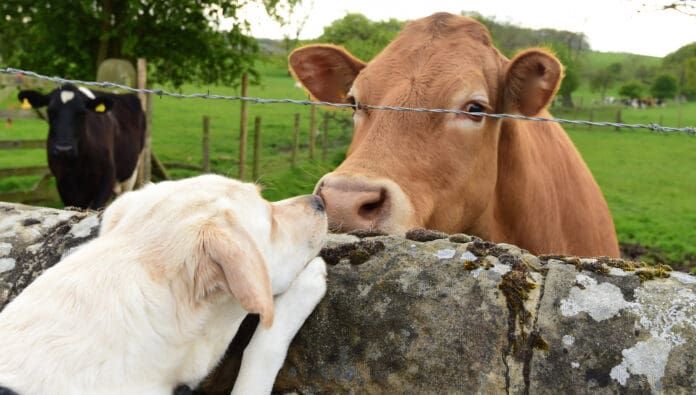Liver is often touted as a nutritional powerhouse for dogs that is packed with essential vitamins and minerals that can provide numerous health benefits. However, too much of a good thing can be harmful, so this organ meat may not be the best choice for your dog. Understanding the pros and cons of feeding liver can help you to make an informed decision about incorporating this organ meat into your dog’s diet.
Nutrients in Liver
Dogs can eat liver, and it is one of the most nutrient-dense organ meats available. It is particularly high in vitamins A, D, E, and K as well as multiple B vitamins. These vitamins pay crucial roles in immune function, vision, and energy metabolism. Liver is also an excellent source of essential minerals including iron, zinc, copper, and selenium, important for various bodily functions including oxygen transport, enzymatic activity, and defense against oxidation.
Liver contains highly digestible, high-quality protein for dogs that can support cellular repair, muscle growth, and immune function. Many dogs find liver palatable, and it can be a beneficial addition for dogs that have a low appetite and need encouragement to eat.
Risks with Liver for Dogs
Despite liver’s nutritional benefits, some risks come with feeding liver, depending on the species the liver is sourced from and the amount that is fed.
Vitamins fall into two main categories, fat-soluble and water-soluble. Excess amounts of water-soluble vitamins are flushed from the body and excreted in the urine, whereas fat-soluble vitamins are stored in the body and overconsumption can lead to dangerous toxicities. Of the fat-soluble vitamins (A, D, E, and K), vitamins A and D are of the highest concern when it comes to dogs.
Liver, specifically the liver of long-lived or ruminant animals, such as cows, sheep, and goats (specifically those that have been grass fed), can have very high levels of vitamin A. Feeding too much liver can lead to vitamin A toxicity (hypervitaminosis A), which can cause bone abnormalities, joint pain, nausea, weakness, convulsions, paralysis, and, in extreme cases, death.
The liver is also responsible for filtering and metabolizing toxins within the animal. Because of this function, it can accumulate toxins and contaminants from the animal’s diet or environment. Longer-lived animals have the potential to accumulate higher levels of toxins than livestock animals that reach market weight quickly, such as poultry.
How to Safely Feed Liver to Your Dog
When feeding your dog liver, moderation is key. As a general guideline, liver should make up no more than 5% to 10% of your dog’s diet. The species from which the liver is from also matters. Beef liver is more likely to be higher in vitamin A than poultry liver. Rotating the species that you source liver for your dog from can help to not only add some variety, but also mitigate some of the risks.
Liver can be a beneficial addition to your dog’s diet, providing multiple essential nutrients for your furry friend. However, it is essential to feed liver in moderation to mitigate some of the potential risks, such as vitamin A toxicity and contaminants. By understanding both the benefits and potential risks, you can make an informed decision to help ensure your pet receives a balanced and nutritious diet that meets their specific needs.
Subscribers can consult our dog food databases online and search for foods that contain specific ingredients. We have databases for dry, wet, and freeze-dried/dehydrated foods.






